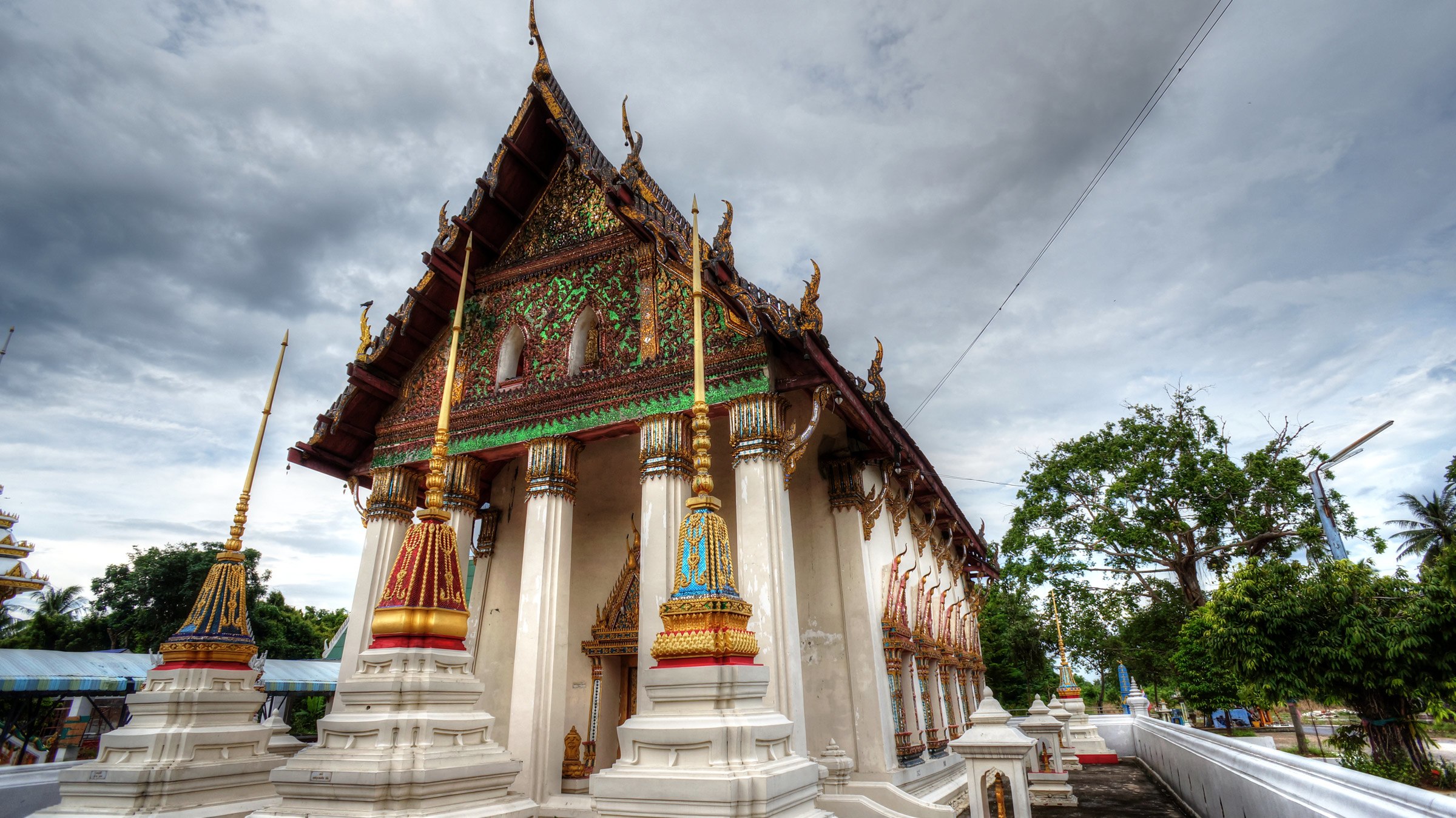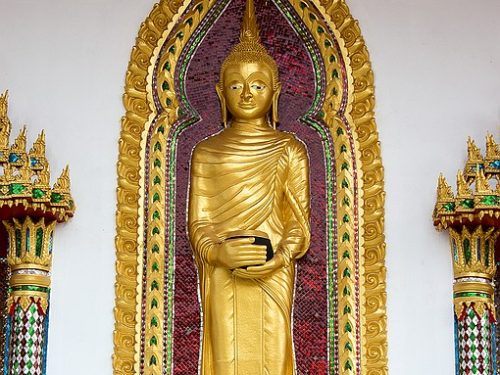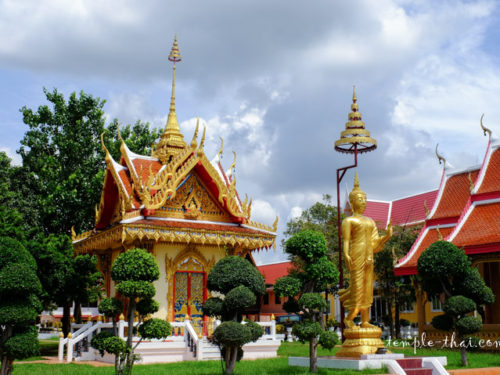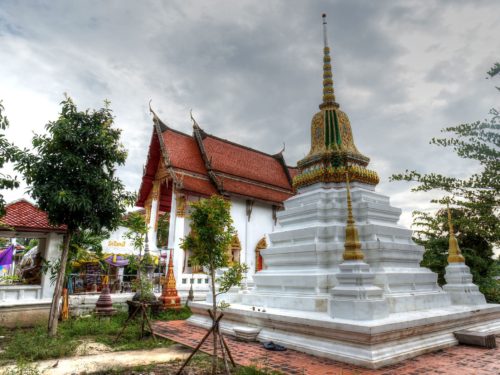Wat Baang Aoi Chaang
Wat Baang Aoi Chaang is located at 79 Baang Aoi Chaang Village, Bangkok Noi Canal, Baang Gruoi- Sai Noi street 29, Baang Gruoi-Sai Noi road, Tambom Baang See Tong, Aumphoe Baang Gruoi, Nonthaburi Province. Originally, in the time of Ayutthaya Kingdom, This “Baang Aoi Chaanng”, or Elephant’s sugar cane village, was once very rich in wodier trees, hence the name of the community and its monastery.
Woodier trees, called Elephant’s sugar cane in some Thai dialects, differ from normal sugar cane tree in that they are perennial plants and have leaf’s shave similar to those of sacred fig trees. Wodier trees are softwood trees and their branches spread in layers. Their leaves taste sweet and astringent and are favorite food of elephants, who also consume them as medicine.
Besides, the trees were used to make elephant seats for ancient kings when they traveled to battles at a long distance. The community had a duty to send the wodier to feed royal elephants in Ayutthaya city as a form of tax, thus earning its unique name as “Baan Suoi Chaang”, or Elephant tax village, in ancient time. The previous abbot of the monastery founded a museum to keep the monastery and community’s antiques and artifacts.
The museum also serves as a learning center and tourist attraction for the public. It is officially opened around 2541-2542 B.E. by modifying the previous dining hall which is a wooden structure of about 100 years of age into a museum.The three-story museum houses many relics and artifacts related to Buddhism.
For example, the abbot’s handmade monk clothes, King Rama V’s talipot fan with the Narayana on Garuda symbol that goes along with the artistic trend in the king’s reign, Talum and Pahn Wan Pha, which are various kinds of trays decorated with ancient high artistry, Chinese crockery from Qing dynasty’s era, ancient Samut Khoi ,Thai long books made from khoi tree, samples of tools and equipment used in Nonthaburi farmers’ daily life such as pots for durian seeding, pots for rice cooking, early Chinese handmade jugs and urns that have jade green color.
Tripitaka books, Teak lacquer cabinets that are yet to be gilded with gold, and gold coffins with devas, Spanish cherry flower and lotus flower carvingsBaang Aoi Chaang Monastery also has rare lifted Buddha’s footprint, an art piece from Ratanakosin era. Kept in the sermon hall of the monastery, the lifted Buddha’s footprint is a painting of right Buddha’s foot, gilded with gold and is 54 inch long and 19.5 inch wide. The paining is more than 200 years old.
Beside the Buddha’s footprint, the sermon hall also has a Dhammas Busshabog Yod Maha Gathin, or a pulpit throne with four posts and pointed roof highly crafted and decorate with exquisite Ayutthaya artistry.













